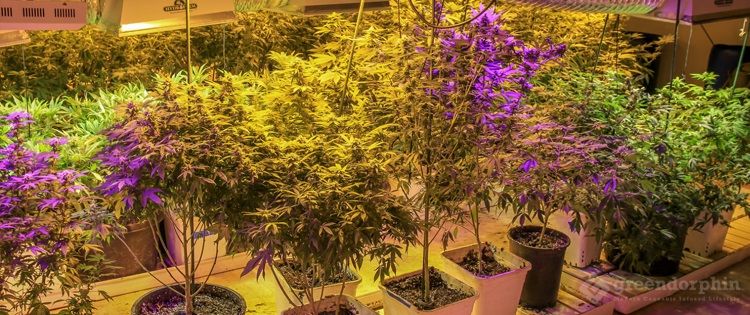Have you ever wondered what happens to seized cannabis? How do police destroy confiscated cannabis and eradicated plants? Do police really smoke the marijuana they find?
If any of these questions have ever crossed your mind, you are not alone.
Most cannabis users and supporters ponder about these matters every once in awhile. Due to their strong appreciation for cannabis, obviously, the last thing they want to see is cannabis plants or buds to be destroyed. I’m sure there is no shortage of creative ideas in regular cannabis users’ heads for utilising any amount of seized cannabis.
So do cops really use the drugs they confiscate?
It does not take much to find a great deal of stories and news articles on the internet about confiscated marijuana vanishing from police evidence lockers and warehouses. And how much more of that could be happening behind the scenes that we never get to know about.

Humans are humans everywhere and police officers are no different. If anyone decides to use or trade with seized drugs in such authoritative position takes a significant risk when it comes to losing their job and future opportunities.
In most cases, seizures during criminal investigations have to be stored securely for evidence for a certain amount of time, sometimes even for years. Once they are no longer needed as evidence, they must be lawfully destroyed.
Although, as times are changing, the number of states and countries allowing the use of medical and adult use cannabis is constantly growing, police need to be a lot more careful with their cannabis plants seizing processes. The procedures that police departments follow today to seize illegal marijuana are the results of the outdated prohibition propaganda and often they conflict with the changes in cannabis law. For that reason, the police are being sued in a number of US states by patients who didn’t get charged and want their plants back, in some cases for millions of dollars.

“Law enforcement is going to have to think more carefully about what their procedures are and how those procedures might need to change in light of changes in the law”
Sam Kamin, Law Professor, University of Denver
Repurposing illegal marijuana for legal use is not an option that authorities would ever consider due to the unknown origin of the drug and how it was produced.
There are a number of different methods used around the world in regards to destroying illegal drugs and what is allowed largely depends on the country’s or state’s regulatory framework around environmental and safety rules.
Today, the most common practice used to destroy seized drugs is burning them at a very high temperature in incinerators. Not just marijuana but other illicit drugs get burned in these large industrial incinerators which are often operated by commercial businesses. The heat that is generated during the burning process is turned into a power that is used for various purposes including the supply to local power companies.

In some places, it is required that the incineration of illicit drugs is carried out in the presence of several witnesses to ensure that everything that needs to be destroyed does actually get destroyed.
Having said that, these energy-plant incinerators are not always an option for every police station. It takes significant resources to obtain and maintain a drug destroyer status and they also require special permits to handle hazardous materials. That is why we often hear police using crematories, foundries, steel facilities, hospital incinerators to destroy illegal drugs and at some police departments, the common practice is to torch seized drugs in metal drums.
Some police stations are allowed to bury large haul of eradicated cannabis plants at local landfills following strict procedures to ensure the plants are properly covered and cannot be located and accessed by anyone.
The best practice to deal with seized marijuana in my view is what Denver has adopted.

Colorado state commenced the sale of recreational marijuana in January 2014 and by today, it has a booming cannabis market benefiting other areas of the state’s economy, while it’s also creating a well-working model for other US states and countries to follow.
Denver is not only pioneering in the adult-use cannabis industry but also in how illegal cannabis is getting destroyed.
There is an organic recycling site in Commerce City, called A1 Organics, that is contracted by the Denver police to destroy confiscated cannabis in an eco-friendly way.
A1 Organics have been recycling garden waste, wood pallets and logs for 40 years and marijuana for 3 years since they’ve partnered up with The Denver Police Department.

The seized cannabis that needs to be destroyed arrives at the recycling center on police controlled trucks, where it gets loaded into a grinding mill and then the ground material gets further transported to Keenesburg to an offsite location for composting. From the compost material a fertilizer, called eco-grow is produced allowing the cannabis plants to get back into nature’s full cycle.
A1 Organics have been experiencing growth in the marijuana grinding part of their business since partnering up with the police. They started off grinding marijuana only once in every 3 to 4 months, while now they have enough material to grind in every couple of weeks and also been receiving interests from police departments from other areas of the state.
As the propaganda around cannabis is surfacing and as the cannabis laws are slowly changing, the times when millions of dollars worth of plants are being destroyed daily will come to its end shortly and hopefully, the world will be able to legally grow a lot more of this miracle plant.
Share your views in the comment section below.
- Forest Bathing (Shinrin-Yoku) with Cannabis - March 26, 2019
- 20 Most Influential Women in Cannabis - March 5, 2019
- How to Make Hemp Soap – Easy Step by Step DIY Recipe [VIDEO] - December 12, 2018


